Graham Reid | | 5 min read
Caroline Weichert: Susi (version for solo piano)

Sunday afternoon. And the prospect of reviewing four new CDs comprising of piano music by Saint-Saens and three other less familiar composers. An exciting prospect, but tempered by the thought that sometimes there's a reason why certain composers are less familiar, and that some pianists have been known to dredge out obscure music in order to have a point of difference and be noticed.
I needn’t have worried.
The four albums are in a new series exploring the largely undiscovered keyboard repetoire entitled Grand Piano (Naxos, through Triton) and the composers are Saint-Saens, Schulhoff, Weinberg and Raff.
Although perhaps compositionally flawed, the Schulhoff, Weinberg and Raff discs are each charming and captivating in their own way.
These composers were heavily influenced by the creative musical giants of their time, and it is fascinating to hear the ghosts of Debussy, Shostakovich and Liszt echo in the early works of these composers. Simply by their strong influences, these works shed some light on the musical milieu at the time of their writing.
Although Saint-Saens is more widely performed, his Etudes are heard rarely and are perhaps under-rated.
The recordings are superb. All four pianists are outstanding and have prepared these works with faultless care and dedication. So much that it seems unlikely any of these four composers would have heard their music prepared with such attention to detail and meticulous consideration as that presented in these CDs.
Each performer seem entirely suited to the music of the composer they have chosen.
The choice of recording venues and the quality of the recordings themselves are without fault and the results are simply delicious.
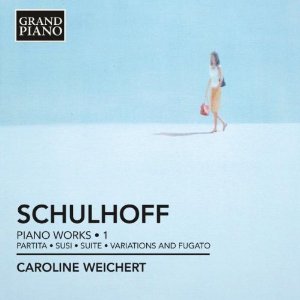 Erwin Schulhoff
(1894- 1942) played by Caroline Weichert
Erwin Schulhoff
(1894- 1942) played by Caroline Weichert
Schulhoff’s music shows such a wide range of styles and influences that one suspects much of the composer’s short life was spent searching for his creative personality - even this small selection of piano music hints at a stylistic chameleon. The influences are extremely diverse: from Debussy to jazz and popular song.
All pieces or
movements are less than four minutes, so there is nothing to really
get one’s teeth into, and at times the listener is left a little
unsatisfied. Indeed, most of the 15 movements in the Variations and
Fugue are so short, and stop so abruptly, Schulhoff gives the
impression he suffers from a fear of boring his
audience.
Nevertheless, there is some witty, clever and
occasionally some idiosyncratic writing, and the CD is not without
it’s moments of magic; the Tango in the Partita is a particularly
evocative.
Weichert plays these pieces with an adroit, attractive and a winning touch, and one imagines Schulhoff would have been delighted with the recordings.
This collection is for those who like piano miniatures.
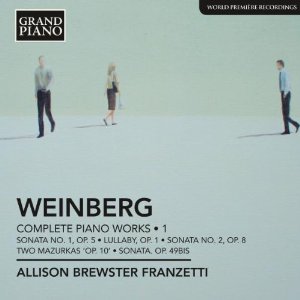 Meiczyslaw
Weinberg (1919-1996) played by Allison Brewster Franzetti
Meiczyslaw
Weinberg (1919-1996) played by Allison Brewster Franzetti
In stark contrast to the miniatures of Schulhoff, the Weinberg works show more interest in longer forms and are more serious with an intense personal expression.
Weinberg’s main influence is clearly Shostakovich and at times the rhythmic invention or modal harmonies seem largely appropriated from his friend and mentor’s scores. The three sonatas particularly suffer from this musical palimpsest.
The Lullaby is perhaps the most individual and successful work; it is a well-constructed and evocative work, although the impassioned climax could not send a child to sleep.
The two Mazurkas were written in 1933 when Weinberg was a mere precocious 14-year old, and in some ways the undeveloped and raw writing has more charm than the more studied works of later years.
The works are played with commitment and an assured dynamism. Franzetti presents each phrase with well thought-out care, allowing the music to speak with both coherency and clarity.
World War II affected both Schulhoff and Weinberg. Schulhoff died in the Wulzburg concentration camp, and Weinberg was forced to flee the Germans more than once.
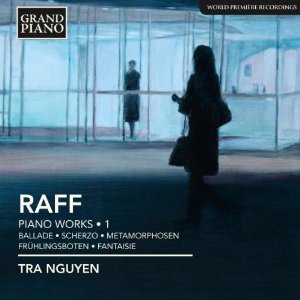 Joachim Raff
played by Tra Nguyen
Joachim Raff
played by Tra Nguyen
As musical pieces, the Raff are more satisfying to the listener than both Weinberg and Schulhoff, and it is clear why he was famous in his lifetime.
The Fantaisie was recently discovered amongst some of Liszt’s organ works in the Netherlands. This early work is heavily influenced by music of Chopin and Liszt.
But the Drei Klavier-Soli written a couple of years later shows the quick development to a style that was more individual and mature.
These pieces show an innate musicality with some engaging counterpoint and colourful harmonies.
The Fruhlingsboten are inspired by nature and the 12 pieces make for satisfying listening.
 Camille
Saint-Saens played by Geoffrey Burleson
Camille
Saint-Saens played by Geoffrey Burleson
This is the ‘odd man out’ of the four. For a start, Saint-Saens is a more frequently played composer, and secondly, the CD comprises of just the etudes, and the complete etudes, six written in each of 1877, 1899 and 1912.
Thirdly, all these pieces were written when Saint-Saens was an established and mature composer, and perhaps most importantly, there are no perceptible musical influences from other composers writing at the time.
As such there is an authority in these works absent in the other three CDs. Each set forms a comprehensive and well structured grouping. The speed of some of the Etudes is incredibly challenging, and perhaps there is an obvious link between those pieces and movement XI Pianistes of Saint-Saens’s well-known Carnival of the Animals.
Burleson plays with rhythmic vitality and an inspired clarity, not only in these extremely fast passages but also in the fugues.
What an enjoyable Sunday afternoon I had listening to these! While the Schulhoff, Weinberg and Raff works maybe considered “lesser” music, I found them fascinating despite, or perhaps because of, their flaws. They are all different and all interesting in their own way. Each of these albums is a treasure – at least on the first listening; I do wonder how often I might return to listen again.
I never cease to be astounded at how the recording industry has developed over the last few decades – the transformation of digital recording has been matched by the critical listening of sound technicians, and there seems an ever increasing pool of unbelievably talented and dazzling musicians.
These recordings are as good as any other recorded piano music I have encountered.
Chris Cree Brown is an associate professor of music at the University of Canterbury and is a well-known composer who has twice been awarded the Mozart fellowship at the University of Otago. His website with his biography and an extensive list of his awards and compositions is here.
Other Voices Other Rooms is an opportunity for Elsewhere readers to contribute their ideas, passions, interests and opinions about whatever takes their fancy. Elsewhere welcomes travel stories, think pieces, essays about readers' research or hobbies etc etc. Nail it in 1000 words of fewer and contact graham.reid@elsewhere.co.nz.
See here for previous contributors' work. It is wide-ranging, huh?

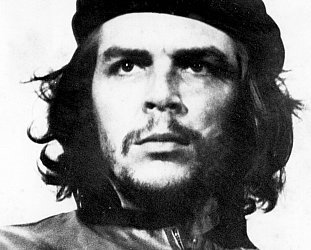
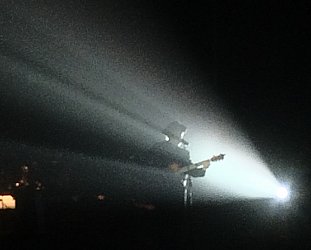


post a comment